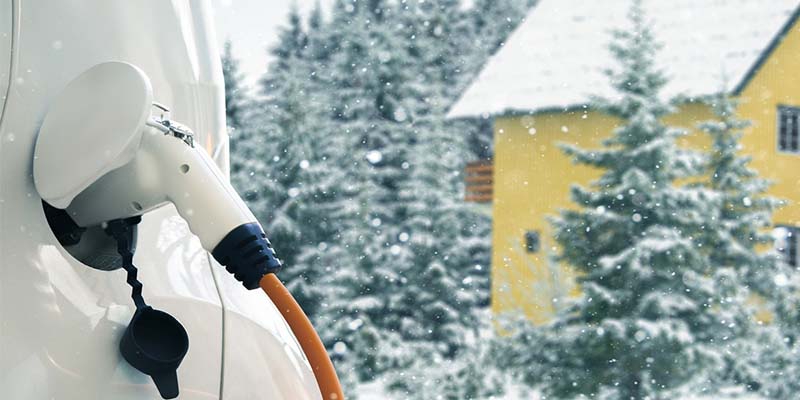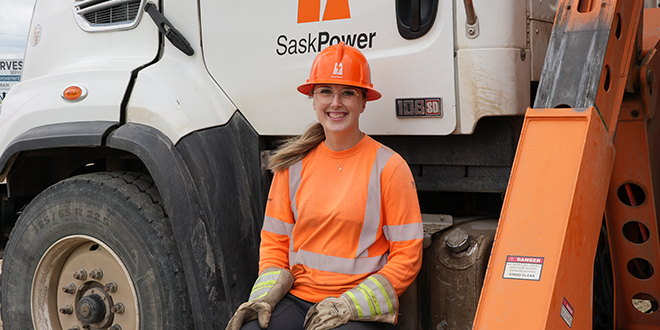EV Mythbusters: Electric Vehicles Can't Handle Our Cold Saskatchewan Winters
March 30, 2021

Myth: Electric vehicles (EVs) can’t handle our cold Saskatchewan winters.
Busted: While the coldest extreme weather can reduce an EV's range by as much as half, that’s really the only downside — and there are some positives too.
In fact, gas and diesel vehicles see a range reduction as well when mother nature plunges our province into the deep freeze.
To get a sense of what driving an EV during a Saskatchewan winter is like, we caught up with eight members of SaskEV and the Saskatchewan Electric Vehicle Association fresh off a cold snap last month.
Do Electric Vehicles Work in Winter?
Recent weather proved EVs can operate in extreme cold temperatures. My Bolt has started every single time for me between -40C and +35C. We passed many cars with their hoods up, getting a boost in the recent cold snap.
- Jim Barnsley, Saskatoon, Chevrolet Bolt
EVs are great in the winter! EVs don't have the engine parts that need to efficiently move and turn like all gas-powered vehicles do, which can cause them to stall at cold temperatures. Turning on an EV is just like turning on a light switch and it's the same at -30C just as it is at 30C.
- Malcolm Lucy, Saskatoon, Tesla Model 3
EVs don’t really “start”. There’s no oil to warm up or crankshaft to turn – they simply turn on like a smart phone or electric drill.
- Tyler Krause, Saskatoon, Tesla Model 3
How Exactly are EVs Affected by the Colder Temperatures?
EVs perform perfectly in any temperature but the car likes the battery to be warm. You will use extra power when it’s cold because the car will use power to heat the battery. Driving on a highway when it’s super cold uses a pile of power as all of the cold air rushing under the car at highway speed cools the battery. Range will drop below 50 to 60 per cent in those extreme conditions. But you just charge more often when it's really cold. All gas cars have reduced mileage in winter as well.
- Lindsay Brooks, Emerald Park, Tesla Model S
The main problem is a drop in range. Performing is not an issue. On a recent trip from Swift Current to Regina, it was -32C. We stopped in Moose Jaw for about 15 minutes and then on to Regina. I could have made it to Regina easily, but I did not want to charge there. We charged in Moose Jaw for about half an hour while having lunch on the way back. In the summer, I would have done the return trip without charging.
- Bob Armstrong, Swift Current, Tesla Model S
Will an EV be Able to Provide Enough Heat to Stay Warm in the Winter?
I use an app on my phone to pre-set charging and set controls to pre-heat my seat and steering wheel. This is done while the car is still plugged in, so it has no impact on range and I can keep the garage door closed to keep me warm while I get in. And there’s no exhaust!
- Lindsay Brooks, Emerald Park, Tesla Model S
Are There any Benefits to Driving an EV in the Winter?
The weight of the vehicle with winter tires makes for amazing traction as the batteries are on top of the axles. My EV car handles better than my ICE (internal combustion engine) SUV that was four-wheel drive. The only downfall in the comparison is the ground clearance.
- Bob Armstrong, Swift Current, Tesla Model S
No waiting for an engine to warm up, almost instant heat, exceptionally responsive traction control.
- Russ Lepage, Saskatoon, Nissan LEAF and Tesla Model 3
Is Charging in the Winter a Problem?
I have a charger in my garage. I’ve taken trips from late November on through spring and never had a problem with a charger on the highway not working or my car not taking a charge.
- Patricia Keyser, Saskatoon, Tesla Model S
Charging becomes a habit like charging your phone. I prefer to charge my car at our private EV charger in our garage while I sleep instead of standing out in the cold at a gas station pump.
- Stephanie Schaefer, Riceton, Tesla Model Y
What Are Some Key Features if I’m Looking to Buy an EV in Saskatchewan Winters?
The biggest feature to look for is quoted battery range — how far you can go on a single charge. This is because it will decrease by as much as 50% at our coldest Saskatchewan temperatures. Many EVs have quoted battery ranges above 350 kilometres. Ask yourself if a 50% loss of range in between charges would still satisfy your needs.
- Malcolm Lucy, Saskatoon, Tesla Model 3
The key features for buying an EV should be the same as for any other vehicle. What do you need the car for most? How wide will the range be that you need? If you need a car to move you within say 200 kilometres, a small, lower-priced EV with a shorter range might be sufficient. If you need to drive further and longer distances you may have to look into an EV with a bigger battery and therefore longer range. It also depends how many fast charging stations are available in your area. I'm very hopeful that the fast charging network will greatly improve over the next years. This network was just started over the last five years and has exploded in numbers since then.
- Stephanie Schaefer, Riceton, Tesla Model Y
Range and all-wheel-drive capabilities, as well as heated seats, are the most important things to consider. Heated seats are a more energy efficient way to heat occupants than to heat the air in the cabin, increasing range while keeping occupants comfortable.
- Tyler Krause, Saskatoon, Tesla Model 3
Visit Electric Vehicle Resources for more information from SaskPower on electric vehicles, including our new tool that calculates potential fuel and energy savings by switching to an EV. The tool also takes into account SaskPower’s generation mix when calculating carbon emissions savings.
Interest in electric vehicles is growing globally, and that’s true here in Saskatchewan too. This is the second in a series of posts aimed at helping our customers make informed decisions on whether an electric vehicle is right for them.
Learn more:
- Electric Vehicles Resources
- Electric Vehicle Energy Calculator
- CAA – Electric Vehicles
- Natural Resources Canada – Traveling with an Electric Vehicle
- SaskEV
- SEVA




